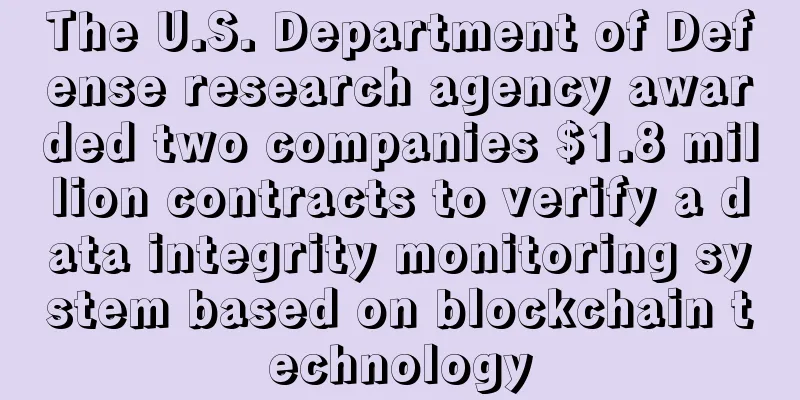Deloitte: Healthcare industry has the most aggressive blockchain R&D program

|
Deloitte's latest report mentioned that the healthcare and life sciences industry has developed the most aggressive blockchain deployment plan of all industries, with 35% of respondents saying that their companies plan to complete the deployment of blockchain technology in production processes in the coming year. The survey shows that blockchain technology has become the core business of many companies in many industries. Healthcare Informatics reported that applying blockchain technology to the healthcare industry can achieve the decentralization of medical data through a shared platform without compromising the security of sensitive information. This model can help hospitals eliminate the high cost of maintaining patient medical records. At the same time, the Deloitte report pointed out that people have different understandings of blockchain technology. In order to collect relevant data, Deloitte conducted an anonymous survey of 308 senior executives of institutions that understand blockchain through the Internet. The annual revenue of these institutions is more than US$500 million, so as to have a deeper understanding of enterprises' views on blockchain and projects. In fact, there are still many executives who do not know or understand blockchain technology; of course, there are also companies that regard it as a top priority project. Moreover, the investment in blockchain R&D varies from industry to industry. 39% of the executives of large American companies interviewed do not know or understand blockchain; 61% of the executives have a macro and professional understanding of blockchain and regard it as the core technology of the company and industry, and 55% of them even said that if the company does not adopt this technology, it will cause the company to lose its competitive advantage. 42% of the executives who have some understanding of blockchain believe that this technology will change their industry. The survey shows that blockchain investment and application patterns may be much more complex than many observers believe. For example, despite the relatively immature technology, 21% of executives who are familiar with blockchain revealed that their companies have deployed it in actual production; 25% plan to complete the deployment next year. These developments are partly due to the financial investment of many companies. 28% of respondents said that their companies have invested at least $5 million in blockchain research and development, and 10% have invested $10 million. Research shows that, like investment trends, blockchain technology deployment also varies by industry, with technology, media, communications, consumer products, and manufacturing leading the way. About 30% of respondents in these industries said their companies have already applied blockchain to production processes, while only 12% of executives of financial services institutions interviewed said their companies have already deployed blockchain in production, so they plan to step up their research, with 24% saying their companies plan to start related deployment next year. The deployment plan for the healthcare and life sciences industry is the most aggressive of all industries, with 35% of respondents saying their companies plan to deploy blockchain technology in production processes next year. Although people have different views on the core value of blockchain, there is a certain consensus on the main obstacles to its widespread application. The survey shows that the core obstacle is the lack of technical standards for immature technology. 56% of respondents believe that technical standards will become the critical point for achieving widespread application. Respondents believe that another major obstacle is regulatory uncertainty. |
<<: Governments should encourage blockchain to protect Internet security
Recommend
Rising tide lifts all boats! Bitcoin ETFs gain market traction, helping Bitcoin break through $67,000
Bitcoin prices hit a new high, breaking through $...
How to read the career line of palm lines
The career line, also known as the fate line, luc...
[Mining Review] Jinbei CK5 Disassembly Test
There is no shortage of dark horses in the crypto...
How does a stingy man look like? He is unwilling to spend a penny
People don't like to get along with stingy pe...
The ability to control subordinates based on physiognomy
The ability to control subordinates based on phys...
Data: Analysis of the total outflow and inflow of Bitcoin in all exchanges/mining pools
Special thanks to Cryptoquant.com for providing r...
Look at your five elements through your face
The Five Elements Personality Theory originates f...
Interested in everything
Sometimes, being interested in some things is a g...
What kind of palmistry means people are born rich
Everyone is striving for a better life. Some peop...
Jin Zizai's fortune-telling: fortune of wealth and good fortune
Jin Zizai's fortune-telling: fortune of wealt...
What does a girl with a mole on the inside of her left arm mean?
I seem to have heard that having a mole on the ar...
Fidelity: Why Corporate Treasury Should Consider Bitcoin
Written by Ria Bhutoria and Tess McCurdy, both fr...
People who are prone to sadness
Some people are extremely sensitive, and any slig...
Physiognomy teaches you how to succeed in your career
Physiognomy teaches you how to succeed in your ca...
Do people with thin and pale lips have no emotions?
Although we do not force everyone to value feelin...









